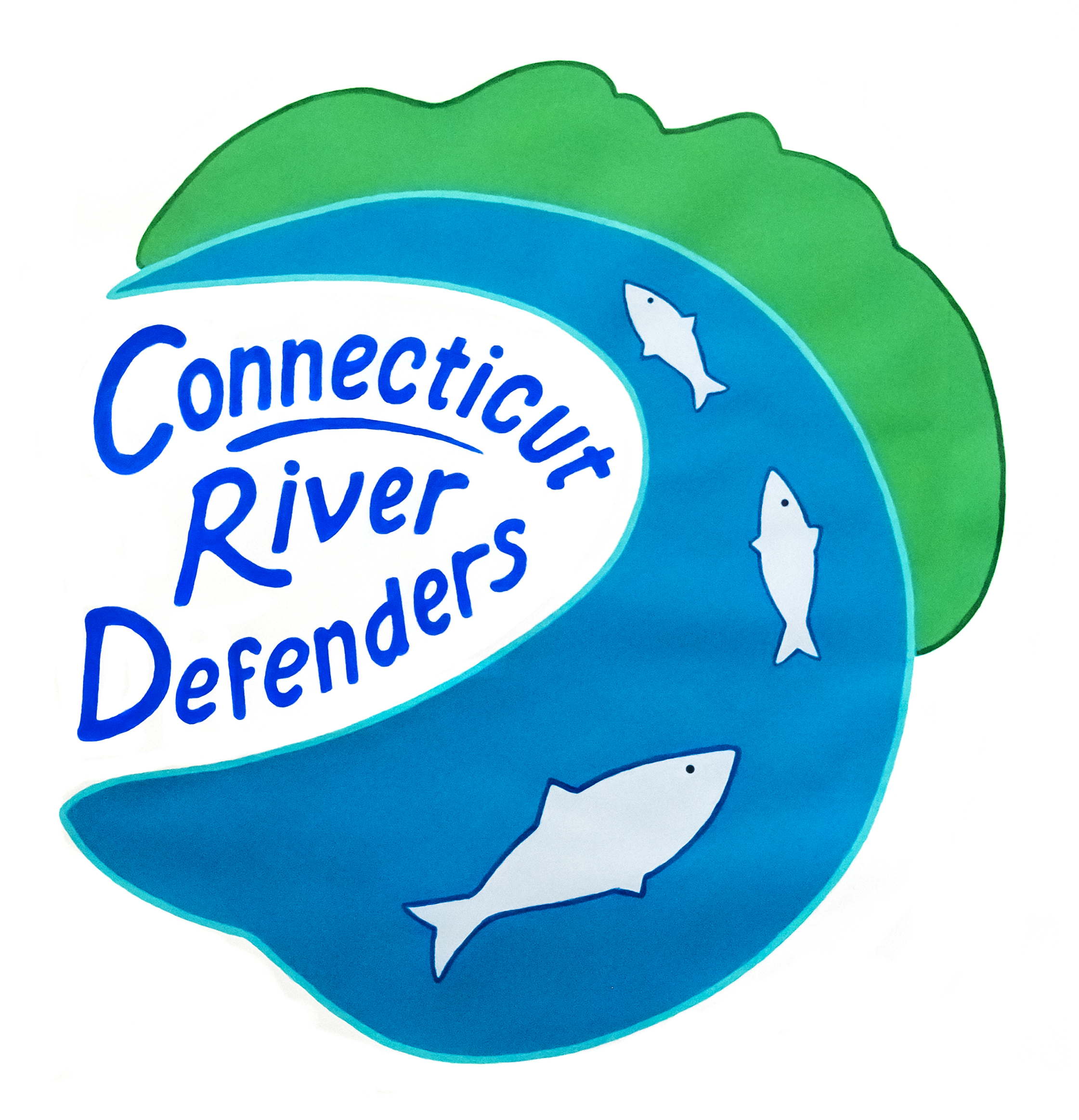Living Waters Flow Downstream
Living rivers flow downstream, but not the Connecticut River in Franklin County where
FirstLight’s 50-year-old Northfield Mountain Pumped Storage Station reverses miles of flow at
times. NMPS is the deadliest machine ever installed on New England’s Great River. It sucks in
endless streams of the Connecticut’s flow at 15,000 cubic feet per second for hours, the
equivalent of eight three-bedroom homes filled with aquatic life every second; inhaling over
28,000 fish houses an hour. A 1992 Northeast Utilities study of its toll on eggs, larvae and
juvenile American shad stated there is “no expectation of survival” for any of those millions of
early life stage shad sucked through its reservoir loop annually. The 1960s Connecticut River
nickname as “the nation’s best landscaped sewer” remains alive and well at Northfield today.
American shad are just one of two dozen species exposed to that daily suction. For those other
species what’s undisputed is none of their millions of untallied eggs, adults and young survive
the trip through Northfield either. That giant predation has been the key river cleanup ignored for
generations by federal and state agencies — and shamefully left unchallenged by river
nonprofits. Silencing its ecosystem damage decades ago would have restored scrambled,
suctioned and reversed flows and lethal impacts in Massachusetts, Vermont and New
Hampshire. Instead FirstLight Power, the Canadian-owned subsidiary of global venture capital
giant PSP Investments, is on the verge of receiving a second Federal Energy Regulatory
Commission (FERC) license to kill.
Northfield is neither a producer of classic river hydropower, nor of renewable energy. It is a giant
grid consumer. This is a buy-low/re-sell-high appliance wholly dependent on massive
megawatts culled from the climate-searing natural gas that dominates today’s New England
power grid. In 2010, Northfield’s unscheduled half-year breakdown and the EPA’s subsequent
sanctions of FirstLight for three months of blatant Clean Water Act violations proved its use is
unn-cessary for the daily running of the power grid. It’s half-century old federal license labeled it
as it should be — an “emergency” power source. Today it’s a deadly foreign-owned cash cow.
For 50 years no substantial defense from those depredations was waged by the likes of the U.S.
Fish and Wildlife Service, National Marine Fisheries, the MA Division of Fish and Wildlife and
MassDEP. The now 70-year-old Watershed Council/Conservancy did nothing. Despite standing
law none took this killer’s owners to court under landmark federal safe fish passage laws
established in this very river system — nor took action under federal and state Clean Water Act
provisions nor requirements of the Anadromous Fish Conservation Act. All had public trust
mandates to protect the river and its migratory fish as food for future generations.
But surely their true intergenerational failure was not standing up for the Connecticut as a living
entity — as the key life source and thriving central artery of New England’s sprawling four-state
ecosystem. The Connecticut has lots of monikers: National Blueway; American Heritage River –
it’s the critical lifeline of the sprawling Silvio O. Conte National Fish and Wildlife Refuge. But as
an intervener in the 10-year-old FERC relicensing for this now Delaware tax-sheltered
contraption it’s been heartbreaking witnessing the non-defense of the essential properties of a
living river. The Connecticut River is literally sucked backward; flushed like a toilet for huge
energy resale profits.
Those agencies and NGOs had half a century to retrieve the disastrously-licensed mess they
signed onto over two generations back. Today the sole pointed licensing remedy specifically
targeting NMPS’s year-round killing is a FirstLight proposal to place a temporary nylon net
above Northfield’s sucking mouth toward the end of fish migration season. It’s meant to deflect
“entrainment” of just two species: adult American eels and juvenile American shad. Rather than
a fix, even if it works it will do next to nothing to quell the endless death toll for all those other
vulnerable fish species during key life stages and annual movements.
FirstLight now operates NMPS via their series of FERC license delay requests while their
venture capital shareholders and CEOs profit off an expired 2018 license. Both U.S. Fish &
Wildlife Service Region 5 director Wendi Weber and Connecticut River Conservancy director
Andy Fisk recently moved off to new bureaucratic positions elsewhere. They won’t be around
when the ink dries on a license disastrously poised to re-enshrine Northfield’s horrific impacts
for decades. Hydro Quebec recently bought up 13 U.S. licensed river stations, many in the
upper reaches of the Connecticut. Canadian capital interests now control the for-profit flows and
ecosystem impacts of nearly 300 main stem miles of New England’s River. “Sold out again,” is
one intergenerational descriptor that comes to mind. Another is heartbreaking.
Karl Meyer is a member of the Society of Environmental Journalists.
